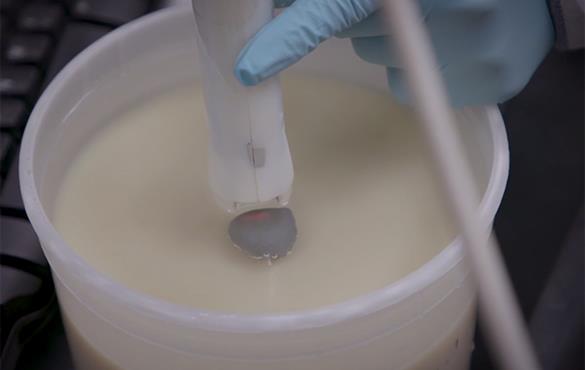In the media: Combining Sound and Light Could Help with Early Ovarian Cancer Diagnosis
Ovarian cancer claims the lives of more than 14,000 women in the U.S. each year and there's currently no way to screen for it, but this new development may change that

>> Read the full article on Medgadget
Researchers at Washington University in St. Louis have developed a diagnostic method involving photoacoustic imaging, a technique that combines ultrasound and laser light. The development may allow clinicians to diagnose ovarian cancer earlier, helping to save lives.
Transvaginal ultrasound allows clinicians to see ovarian masses, but doesn’t allow them to tell if what they are viewing is a neoplastic tissue. The new technique, however, combines ultrasound with photoacoustic imaging, where laser light penetrates the vaginal wall to illuminate the vascular bed in the ovaries.
This allows clinicians to investigate the vasculature of the structures, and assess clinically relevant parameters such as tumor angiogenesis and blood oxygen saturation. Typically, ovaries bearing tumors will have extensive blood vessels and lower blood oxygen saturation compared with healthy ovaries. Aside from helping clinicians to identify a tumor, these parameters also relate to tumor metabolism, growth, and the potential of a tumor to respond to treatment.
The Washington University research team designed a specialized vaginal probe with a sheath containing laser-connected optical fibers that wrap around an ultrasound probe. Using the probe in a pilot study involving 16 patients, the researchers found hallmark increases in angiogenic markers and reductions in blood oxygen saturation in a common type of ovarian tumor, including early stage tumors.
“Physicians are very excited about this because it might bring significant change into current clinical practice,” said Zhu. “It is very valuable to detect and diagnose ovarian cancers at early stages. This technology can also be valuable to monitor high-risk patients who have increased risk of ovarian and breast cancers due to their genetic mutations.”
Based on these initial promising results, the researchers are applying for funding to conduct a large clinical trial, and hope to validate the technology in a larger group of patients.




